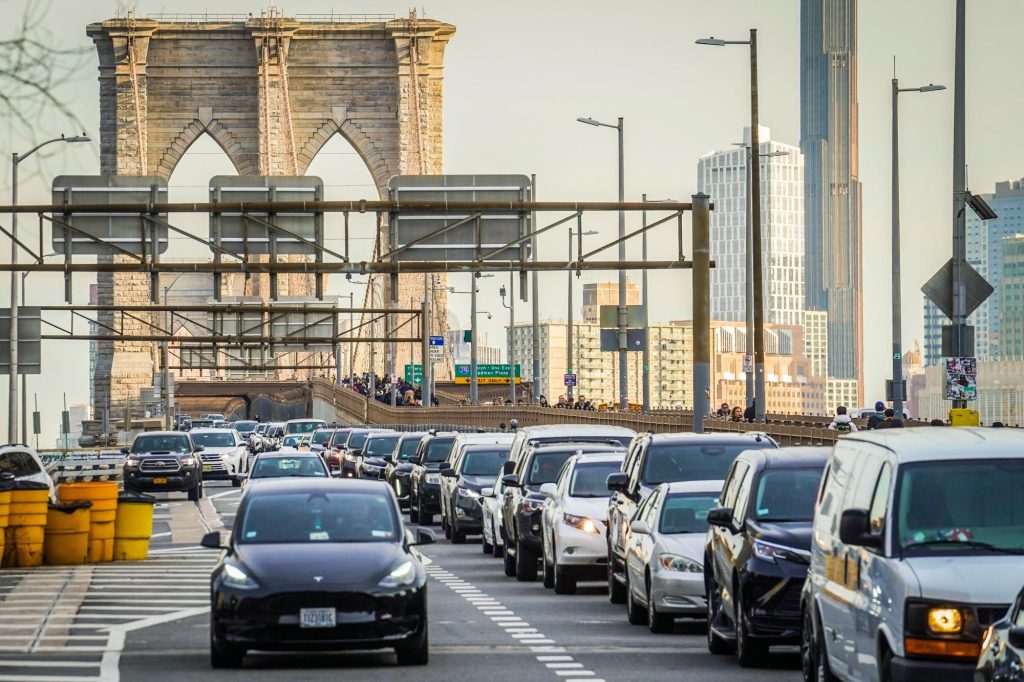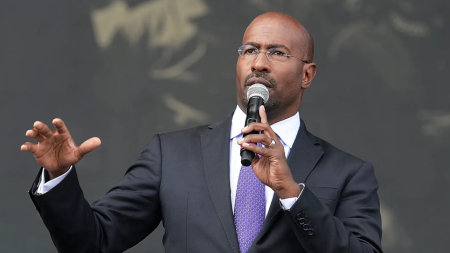By TOM KRISHER and MATTHEW DALY (Associated Press)
The Biden administration is expected to announce new automobile emissions standards this week that will ease proposed limits for three years before eventually reaching the same strict standards proposed by the Environmental Protection Agency.
The changes are happening because sales of zero-tailpipe emissions electric vehicles, which are needed to meet the standards, have started to slow. The auto industry has objected to the EPA’s proposed standards revealed last April, as part of a very ambitious plan to reduce planet-warming emissions from passenger vehicles, citing lower sales growth.
The EPA suggested that under its preferred alternative, the industry could meet the limits if 67% of new vehicle sales are electric by 2032.
However, during a public comment period on the standards for 2027 through 2032, the auto industry called the benchmarks unworkable due to slowing EV sales, consumer concerns about cost, range, and a lack of publicly available charging stations.
According to three people familiar with the standards, the Biden EPA will select an alternative that delays implementation from 2027 through 2029, but gradually increases to reach the level the EPA preferred from 2030 to 2032. This alternative will have other adjustments to help the auto industry meet the standards, including changes to how EV fuel economy is measured, as per one of the sources.
The individuals, two from the auto industry and one from the government, did not want to be identified because the new standards have not been made public by the EPA.
The changes seem to be aimed at addressing strong opposition from the industry to the quick increase of EVs, along with public hesitance to fully embrace the new technology. There is also a legitimate threat of legal challenges before conservative courts.
The Supreme Court, with a 6-3 conservative majority, has increasingly restricted the powers of federal agencies, including the EPA, in recent years. The justices have limited the EPA’s authority to fight air and water pollution, including a major 2022 ruling that restricted the EPA’s authority to regulate carbon dioxide emissions from power plants contributing to global warming.
Biden has prioritized fighting climate change in his presidency and aims to reduce carbon dioxide emissions from gasoline-powered vehicles, which are the largest single source of U.S. greenhouse gas emissions.
At the same time, Biden needs cooperation from the auto industry and political support from auto workers, a crucial voting bloc. The United Auto Workers union, which has endorsed Biden, supports the transition to electric vehicles but wants to ensure that jobs are preserved and that the industry pays top wages to workers involved in building the EVs and batteries.
White House press secretary Karine Jean-Pierre said Tuesday that White House officials “don’t have any concerns” about the EPA rule, which could be announced as soon as Wednesday.
“We know, with these types of things, it takes time,” she told reporters on Air Force One as Biden traveled to Nevada. “But we’re still going to stay committed to our (climate) goals.”
In general, environmental organizations have been hopeful about the new EPA plan.
Manish Bapna, who leads the Natural Resources Defense Council, told journalists recently that he believes the regulation will greatly reduce carbon emissions from cars and light-duty trucks, which account for one-fifth of the nation’s greenhouse gas emissions.
“From what we've been told, there's no reason to question that the climate regulations for cars and light-duty trucks will reduce well over 90% of the carbon pollution from new cars, SUVs, and pickup trucks’’ over the next several decades, Bapna said. “That's significant.″
Between 2027 and 2055, the EPA rule “will prevent more than 7 billion tons of climate-harming carbon emissions. That's more than the nation produces in a year. It's absolutely necessary, tangible progress,’’ Bapna said.
“EPA’s clean car standards will accelerate the U.S. efforts to achieve cleaner, healthier air for everyone,” said Amanda Leland, executive director of Environmental Defense Fund, another environmental group.
Tailpipes release harmful particle pollution and smog and are one of the biggest sources of climate pollution in the nation, Leland said. “Robust clean car standards help ensure cleaner air and a safer climate, significant cost savings for our families and hundreds of thousands of new jobs in U.S. manufacturing.″
Luke Tonachel, an automobile expert with the Natural Resources Defense Council, stated that the new clean-car standards will motivate the auto industry to “continue investing, as it’s already starting to do, over the long-term period″ in EV and zero-emission vehicles. The rule also will send a signal to infrastructure providers and utilities to keep expanding the charging infrastructure,’’ he said.
But Dan Becker at the Center for Biological Diversity, expressed concern that loopholes could allow the industry to still sell vehicles that run on gasoline. He also worries that the industry will get away with doing little during the first three years of the standards, which could be reversed if Donald Trump becomes president.
“The bottom line is that the administration is giving in to pressure from big oil, big auto, and the dealers to slow progress on EVs and now allow more pollution from cars,” Becker said.
At a Detroit-area rally in September, Trump insisted Biden’s support for electric vehicles — a crucial part of his clean-energy plan — would ultimately result in lost jobs. “He’s betraying you to China, he’s betraying you to the environmental extremists and the radical left,” Trump told his audience.
Republicans and some in the industry have argued that the rule would demand that 67% of new vehicle sales be electric by 2032, forcing people to purchase cars, trucks, and SUVs that they aren’t yet prepared to accept.
But EPA Administrator Michael Regan has stated that the new rule is a performance standard that leaves it to the industry to find solutions.
U.S. electric vehicle sales increased by 47% last year to a record 1.19 million as EV market share rose from 5.8% in 2022 to 7.6%. But EV sales growth slowed toward the end of the year. In December, they rose 34%.
The Alliance for Auto Innovation, a large industry trade group, stated in a press release that the increase to 67% originally suggested by the EPA is too rapid for the industry to achieve. They mentioned that the EPA’s speed of EV adoption is quicker than President Joe Biden’s aim of electric vehicles being half of U.S. new vehicle sales by 2030.
“It's unclear where we will be in 2032 at this point,” the group mentioned. “But slowing down the pace of EV adoption in 2027, 2028, 2029 and 2030 would be the right decision as it prioritizes more realistic and achievable electrification goals in the next few crucial years.”
The EPA’s preferred standards reduce carbon dioxide emissions from 152 grams per mile in 2026 to 73 in 2032, a 52% decrease. The limits would reach 99 grams per mile by 2029.
However, according to environmental groups' expectations, the alternative standards would be relaxed in the first three years, reaching 112 grams by 2029 but still hitting 73 in 2032.
____
AP Auto Writer Tom Krisher reported from Detroit. AP reporter Seung Min Kim on Air Force One contributed to this story.
___
This story is corrected to show that the NRDC president said the EPA rule will prevent 7 billion tons of greenhouse gas emissions over 28 years, not 70 billion tons.









